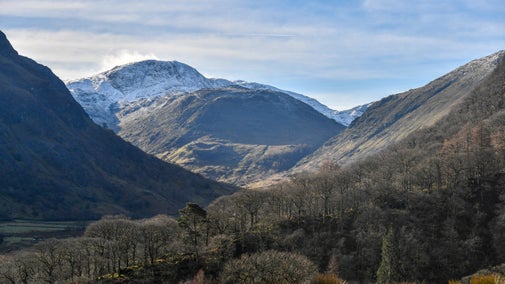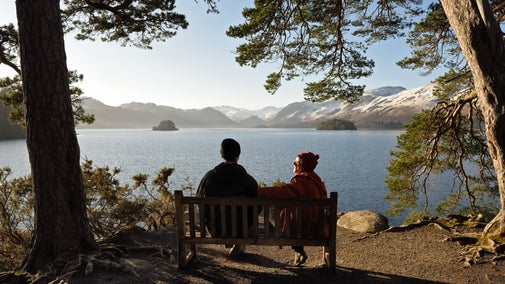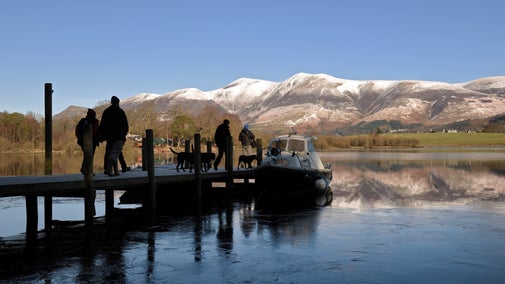Castle Crag from Seatoller trail: the scenic route
Lake District
Scaling Castle Crag from Seatoller starts with a bit of a climb, then follows a rolling contour route giving you great views right across the valley. This is definitely the civilized way to climb Castle Crag.
Near to
Borrowdale and Derwent WaterStart point
Seatoller National Trust car park, CA12 5XN. If you are starting from the Rosthwaite National Trust car park, use the tip above to bring you to step 7 and continue around the loop.Trail information
Starting from the National Trust Rosthwaite car park
If you are starting from Rosthwaite, leave the car park and take a right to follow the track and continue straight through the village. Keep straight following the gravel track through a gate (please keep open if open or close behind you if closed). Continue along the path all the way to the stone bridge which is mentioned in step 7. Go over the bridge and turn left, you can now continue with step 7 and 8 before going back to step 1 and around back to the stone bridge on step 7 before re-tracing your steps back to Rosthwaite car park.
More near here
Octavia Hill walk at Brandelhow Park, Derwent Water
Enjoy a relaxing amble through parkland at Brandelhow and along the quiet side of Derwent Water, following in the footsteps of National Trust co-founder Octavia Hill.

Walla Crag to Ashness Bridge walk
This walk takes you through the timeless beauty of the Borrowdale landscape and up to magnificent viewpoints which are spectacular in every season.

Borger Dalr geology walk
Discover more about the origins of Borrowdale on the Borger Dalr geology walk. If you are lucky, you may even see a red squirrel too.

Seatoller, Styhead Tarn and Grains Gill walk
An invigorating circular walk takes you from Seathwaite into the heart of the Lakeland fells, with peaceful tarns to picnic by and views of Great End and Great Gable.

Get in touch
Our partners

We’ve partnered with Cotswold Outdoor to help everyone make the most of their time outdoors in the places we care for.
You might also be interested in
Walking in the Lake District
From gentle ambles to more challenging hikes, these are some of the best walks to explore the heart of the Lake District.

Walking
Explore some of the finest landscapes in our care on coastal paths, accessible trails, woodland walks and everything in between. Find the best places to walk near you.

Top tips for hill and mountain walking
Learn about the essential clothing and equipment to take with you, keeping your energy levels up, staying safe and leaving the environment as you found it.

Staying safe at National Trust places
The special places in National Trust care sometimes come with a few risks for visitors, be it coastline or countryside. Find out how to keep safe throughout your visits.

Cotswold Outdoor: our exclusive walking partner
Learn about the National Trust’s ongoing partnership with Cotswold Outdoor. Find out how they help us care for precious places and the exclusive discount available for National Trust supporters.

Things to see at Derwent Water and Keswick
Take in the views from Friar’s Crag and visit historic sculptures on a lakeside walk around Derwent Water or set off from Keswick to explore the surrounding woodlands and fells.

Activities on Derwent Water
Take to the water for a spot of canoeing, paddleboarding or paddling. The islands of Derwent Water are waiting to be discovered


